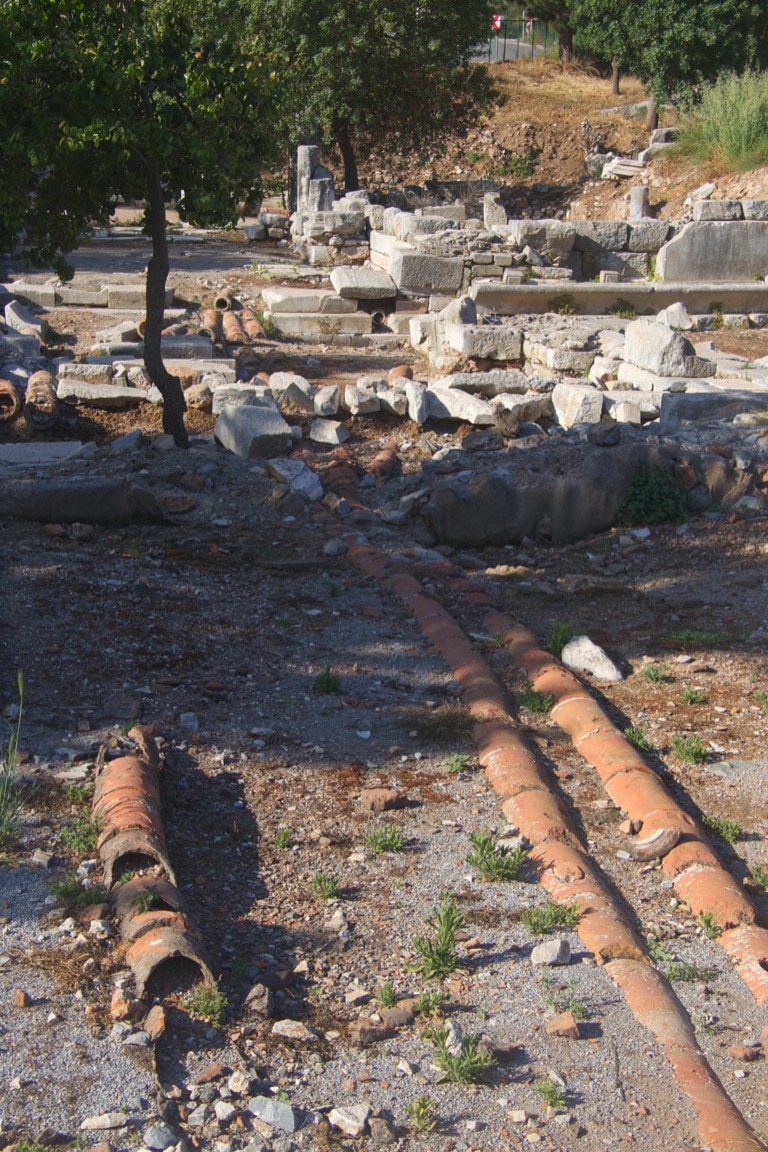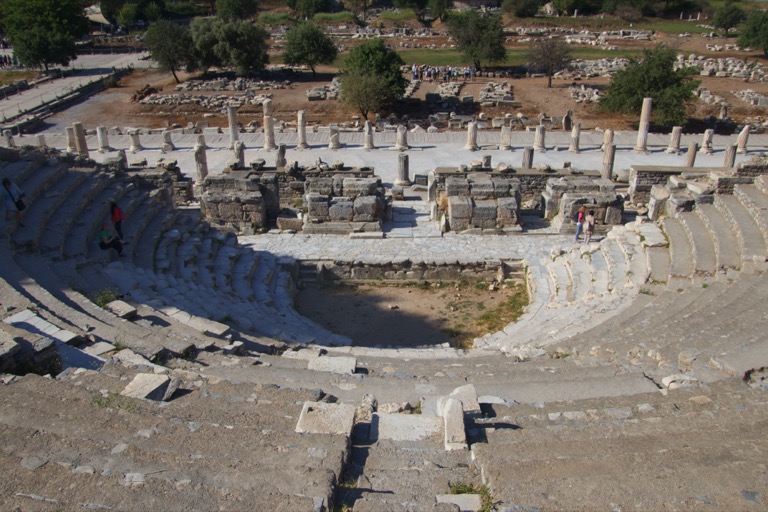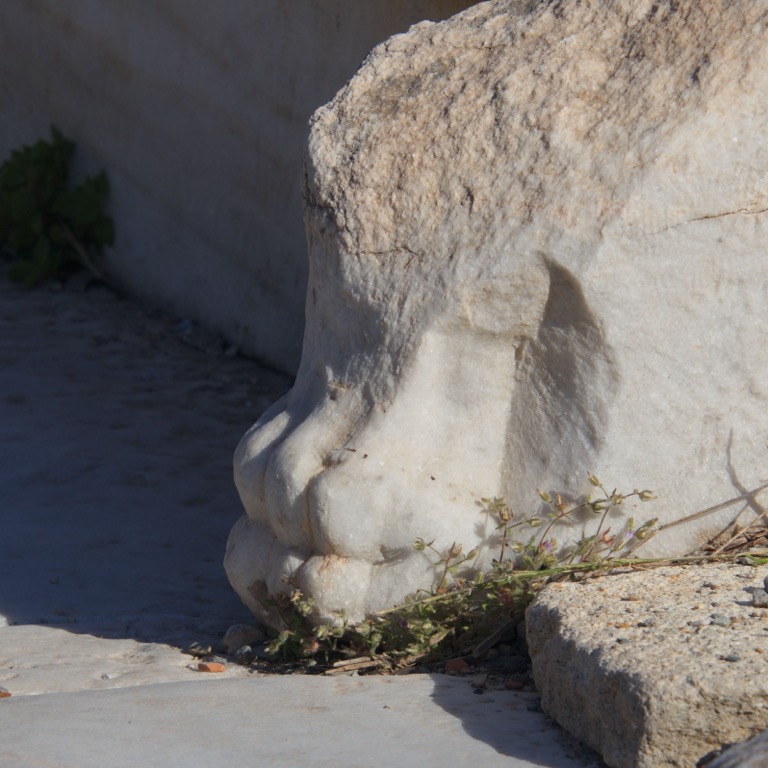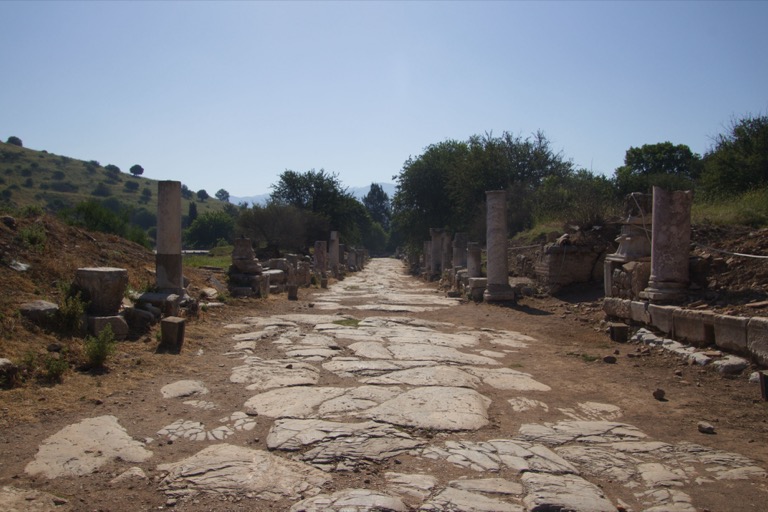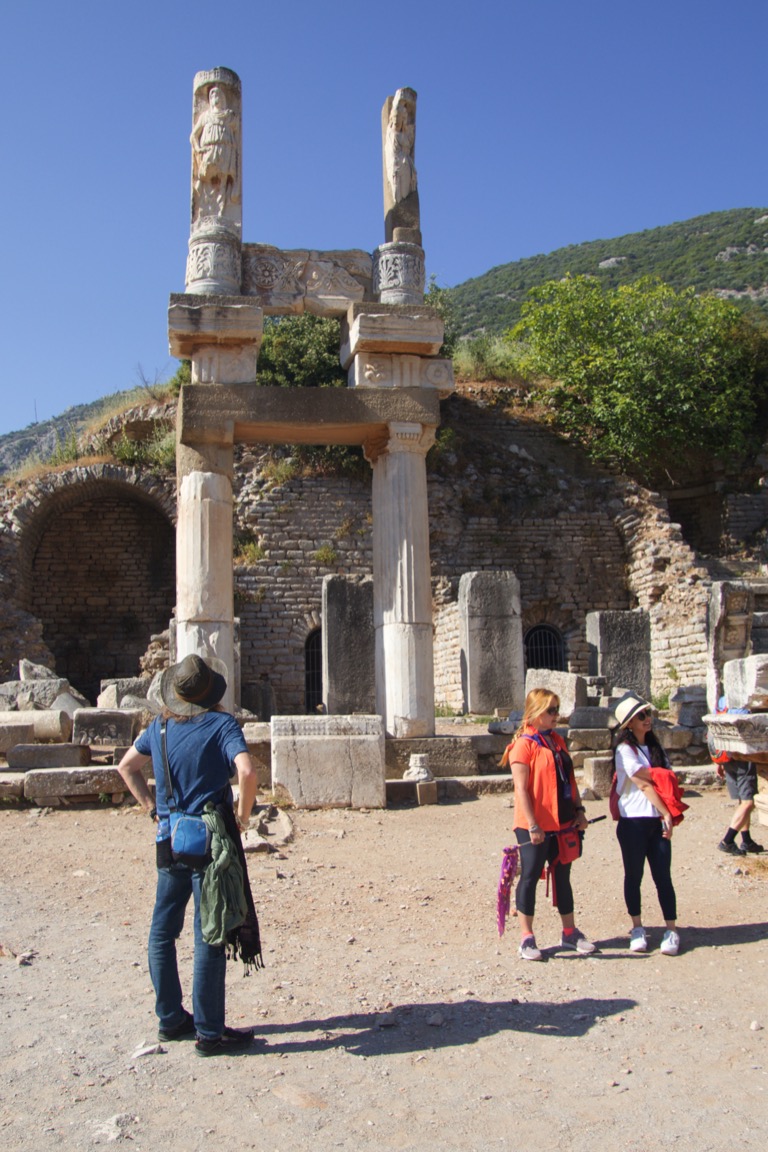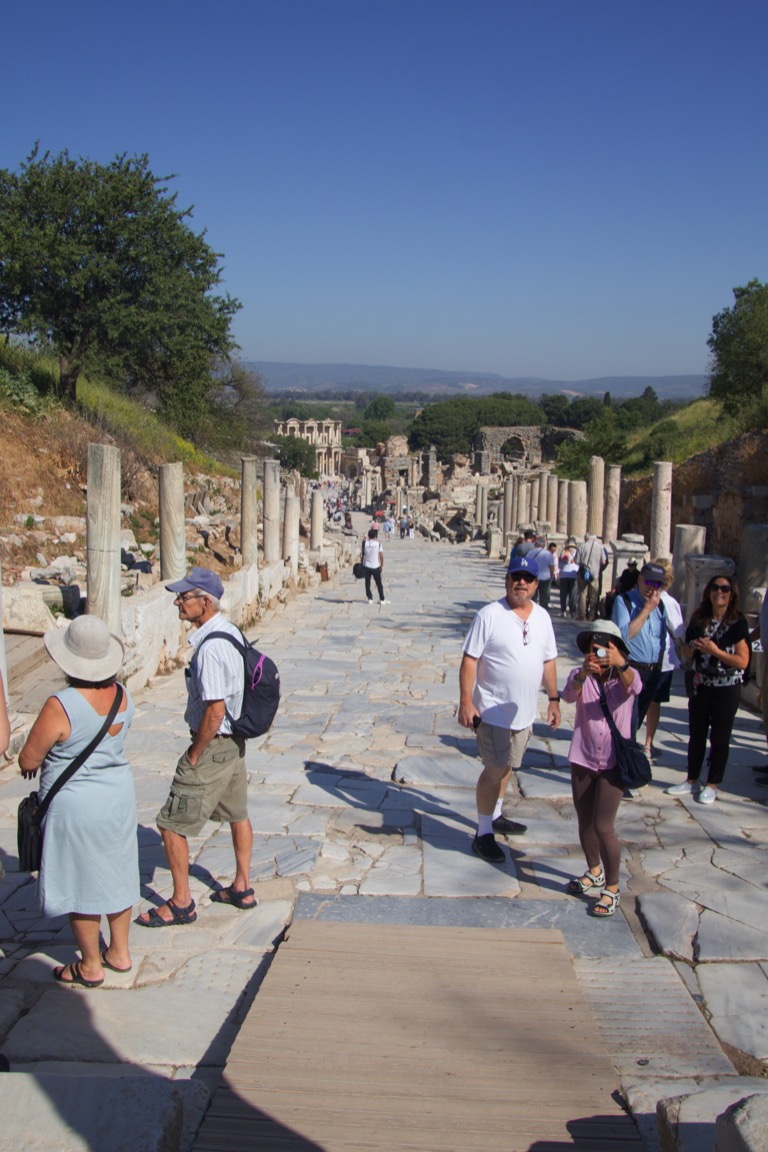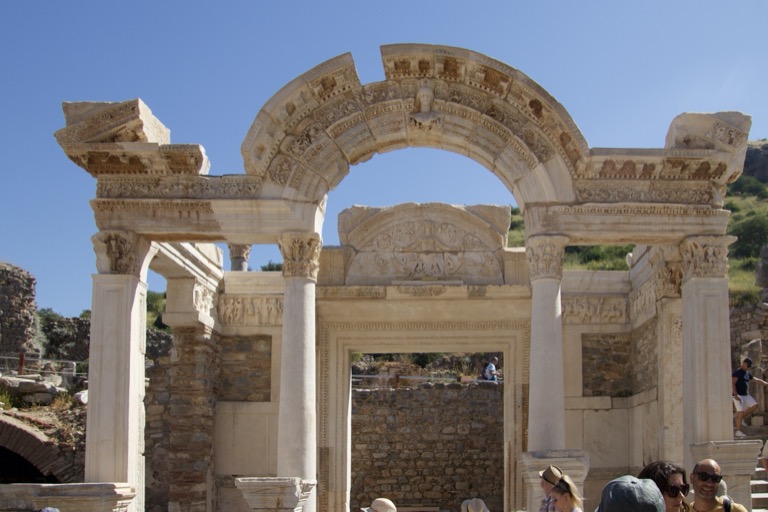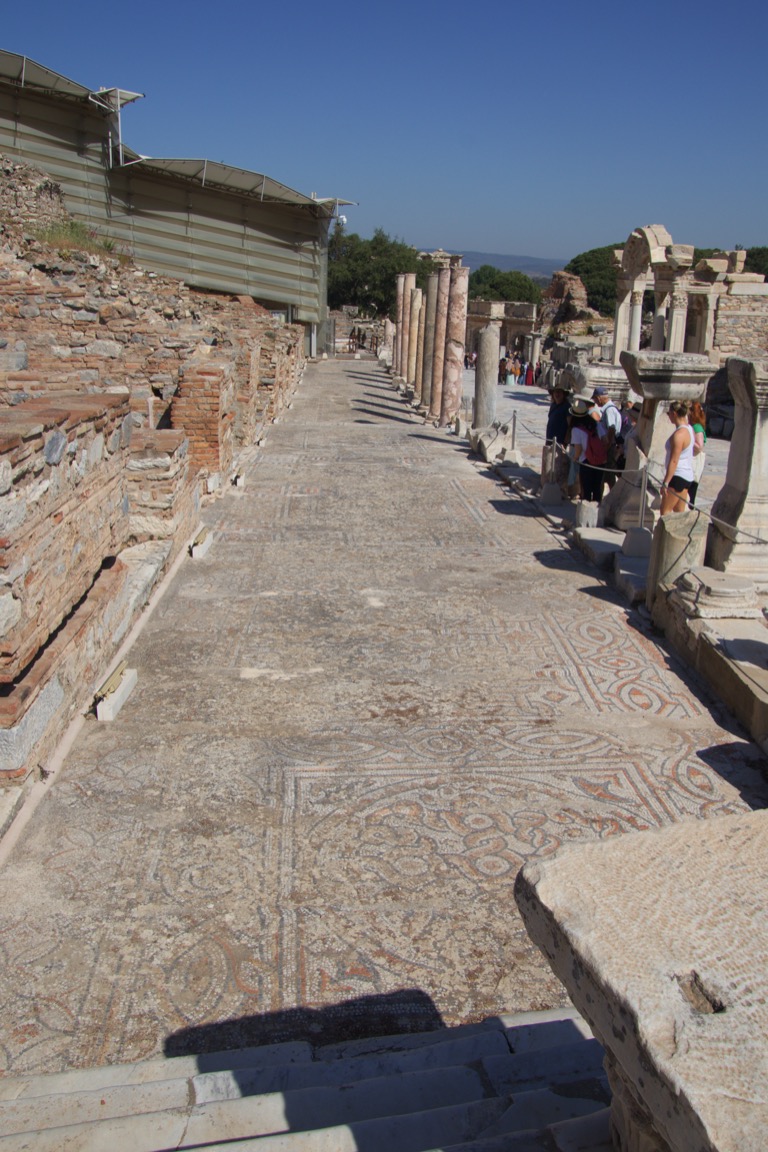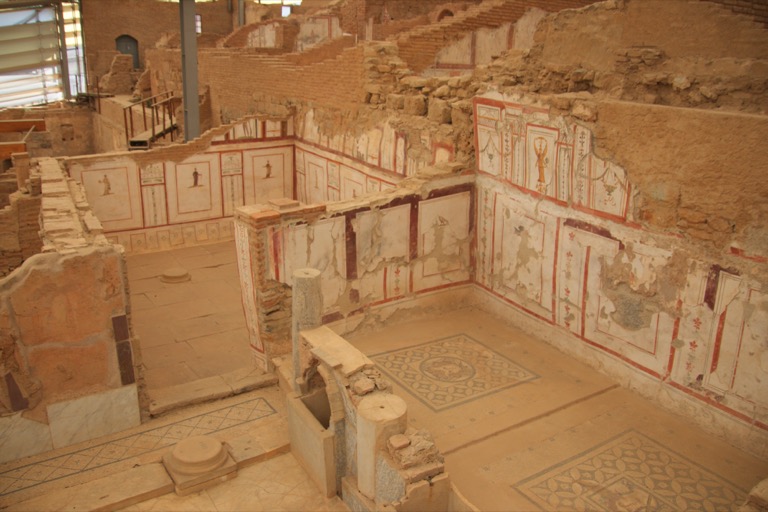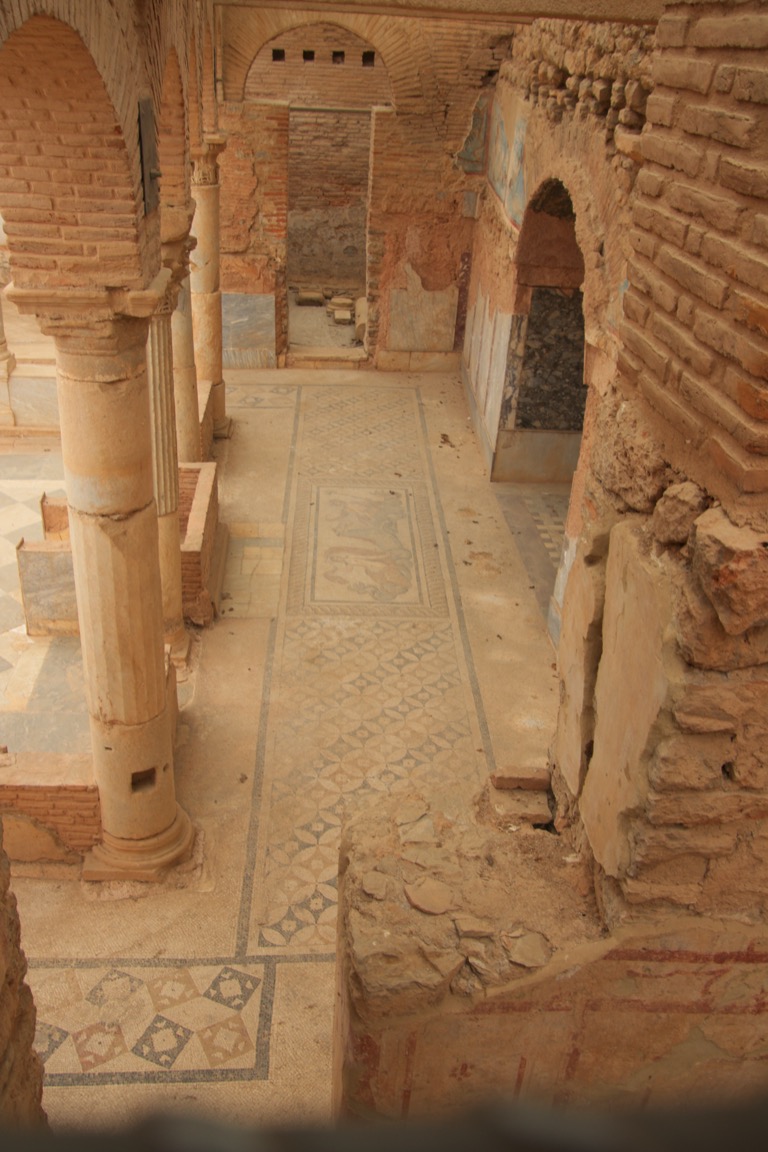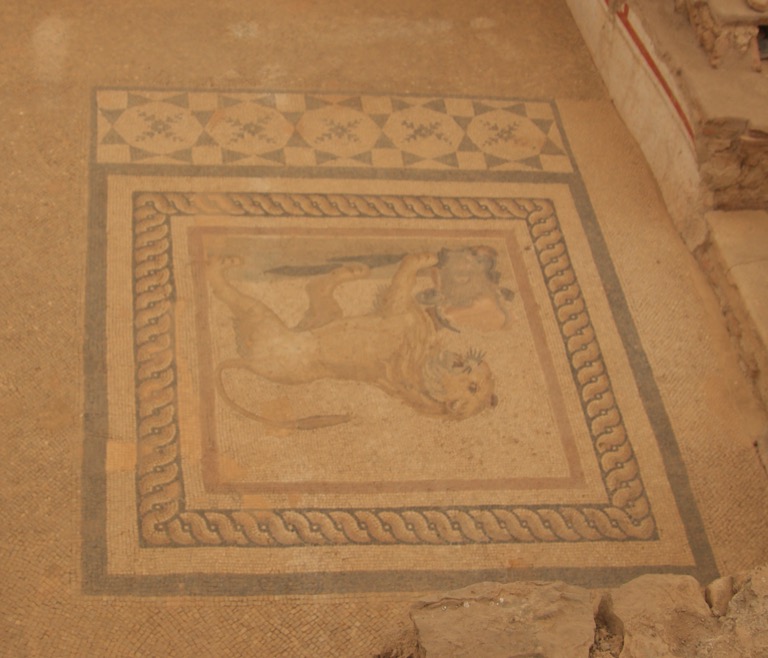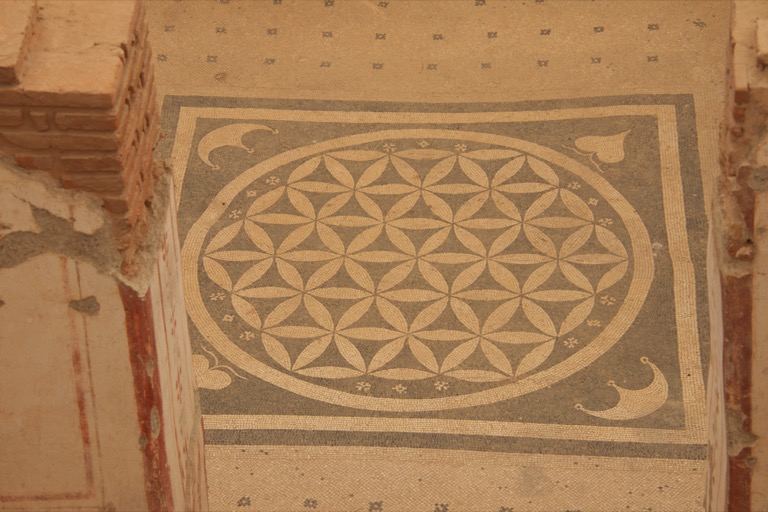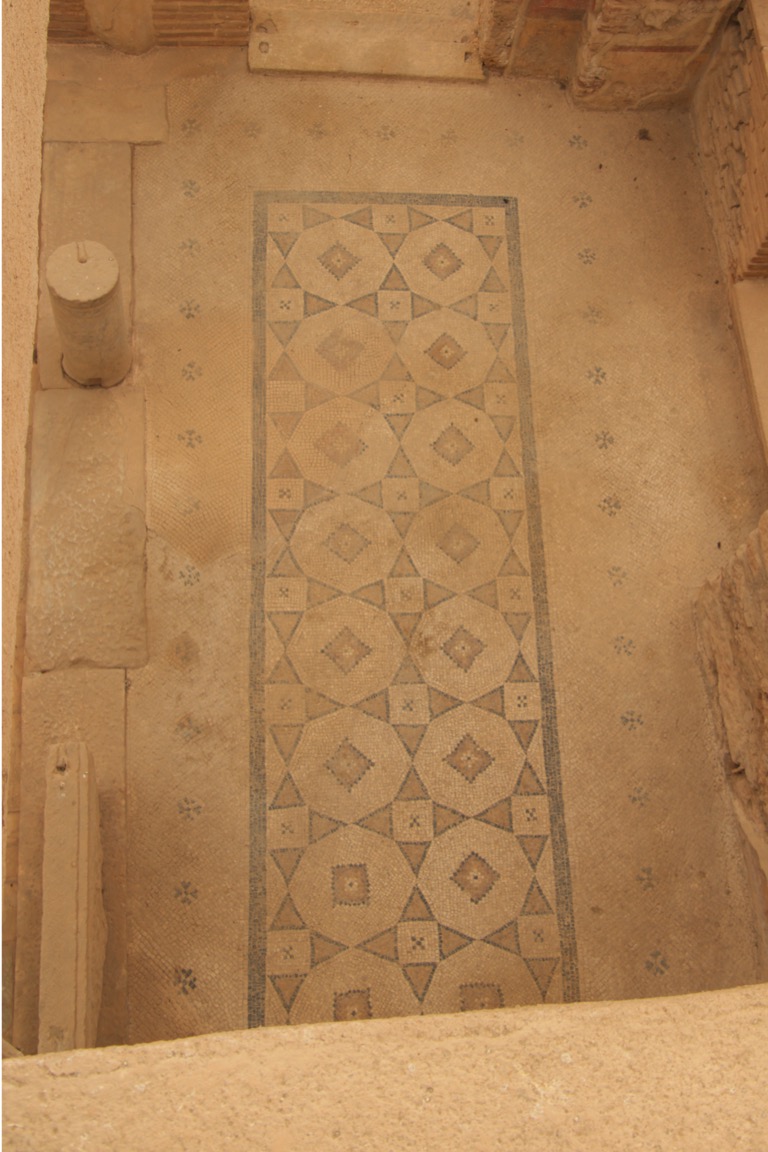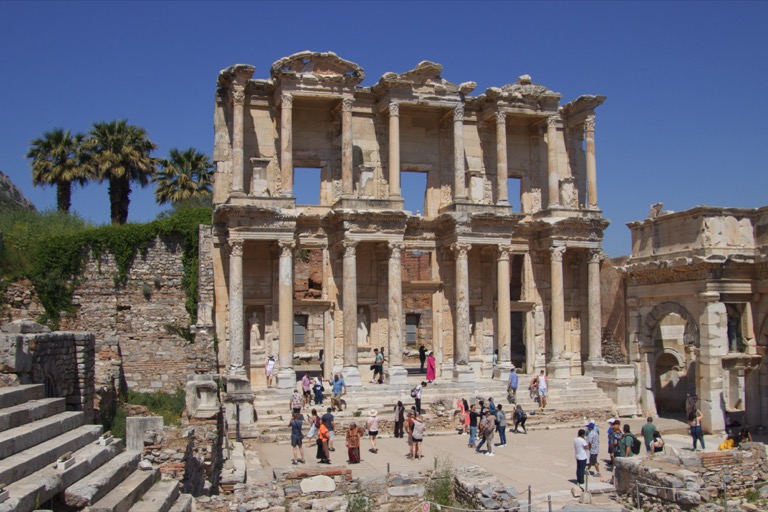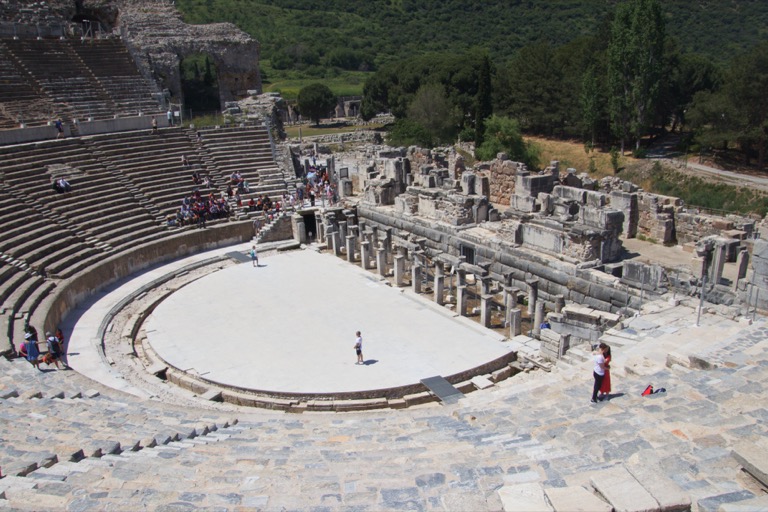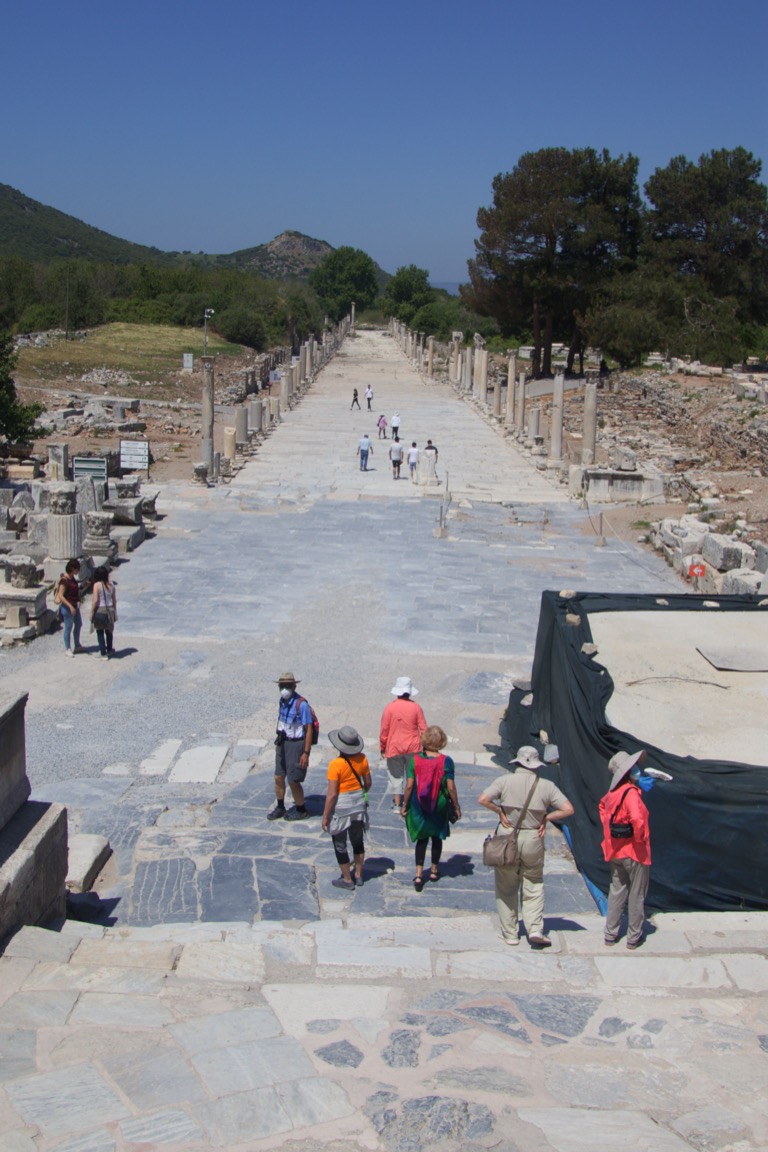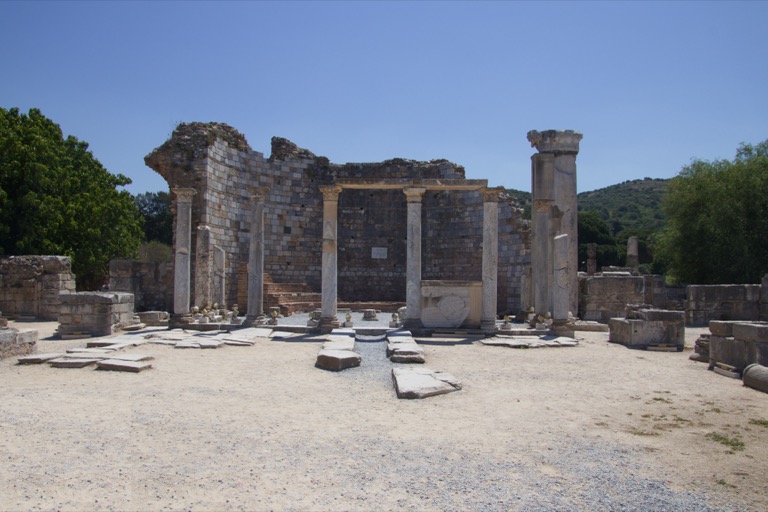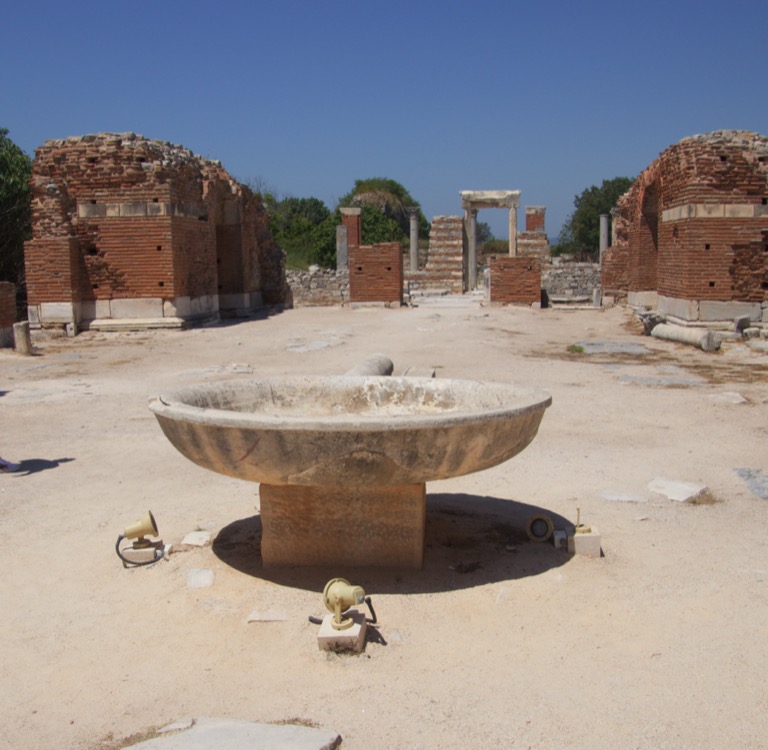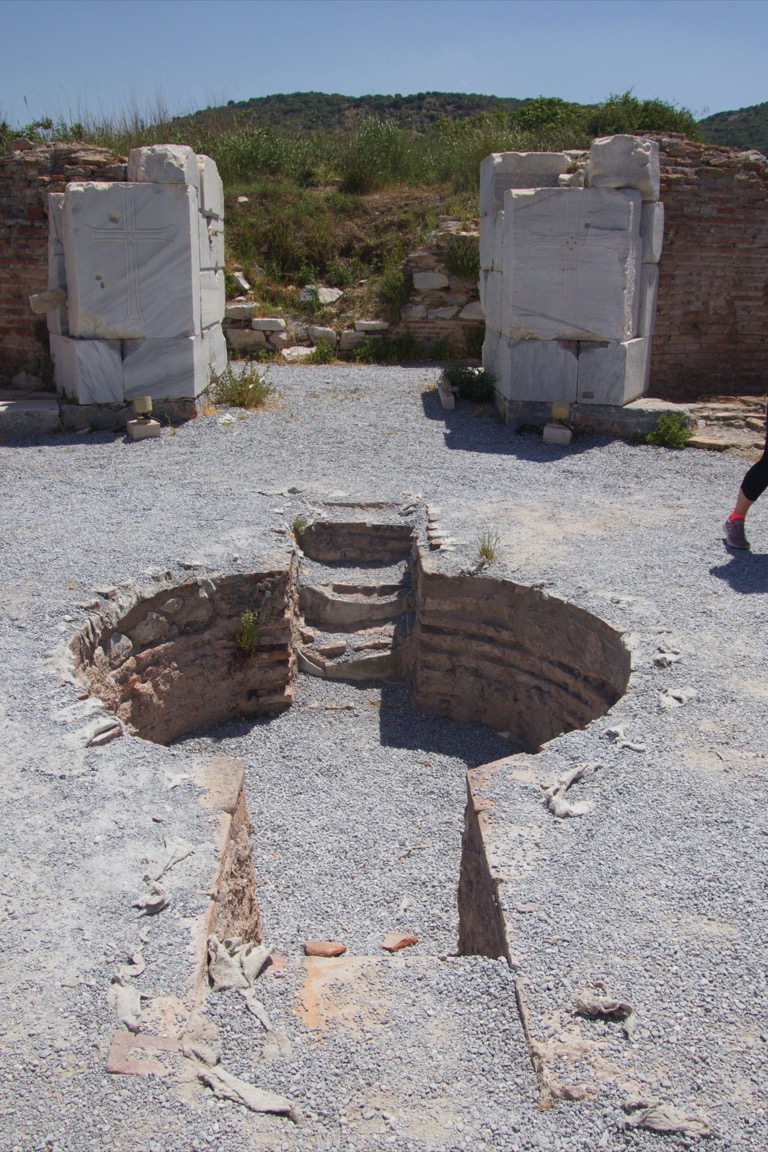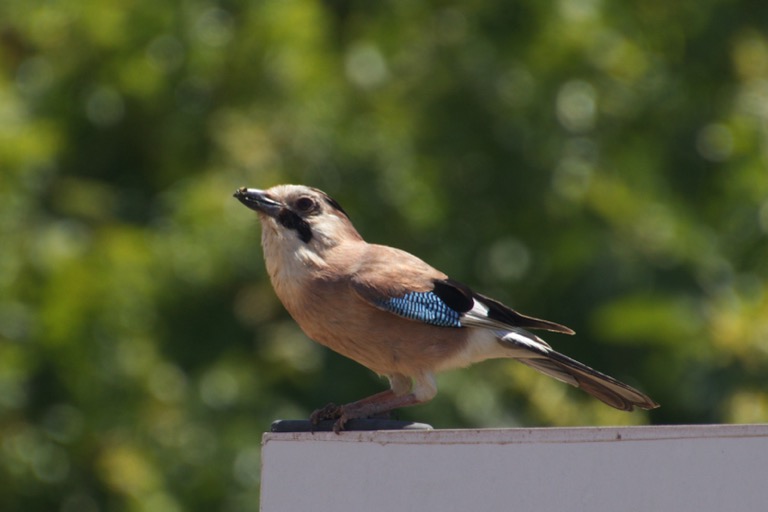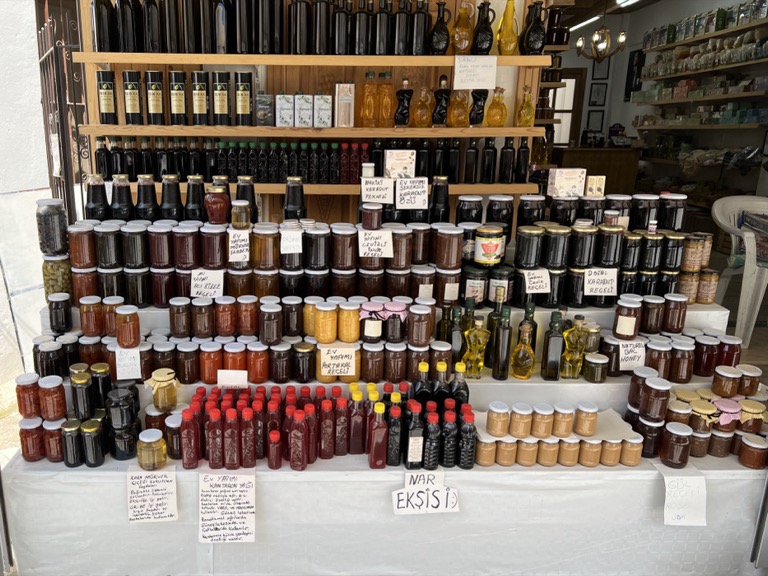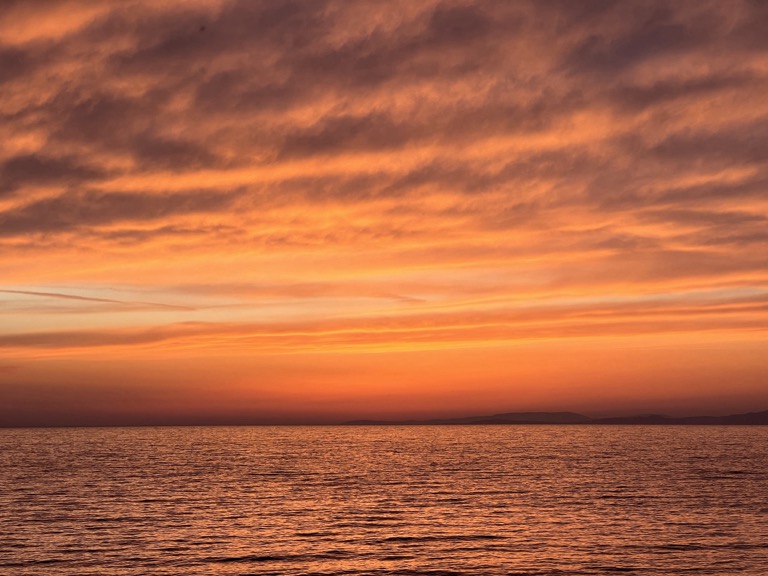on
Ephesus
Today we visit Ephesus which is a UNESCO World Heritage Site. There is a cruise ship in the port this morning, so there will be plenty of people there.
Our guide has plenty of experience with this problem and knows off the main path places to show.
We entered through the Magnesian Gate and walked down the hill towards the now silted-in harbor.
Near the gate, there is a spring up on the hillside that supplies some of the the water for Ephesus. There were pipes under the streets to bring it to the fountains and canals of the city.
If you look closely at the pipe second from right about three tiles up from the bottom, you’ll see a clean out hole and a plug sitting in the hole.
We first come to the agora or shops area. It’s a big rectangular area with shops around the outside. I suspect that itinerant merchants set up in the middle.
Along the agora, we saw this early cross carved into the marble. The symbol contains all the letters of Christ’s name when written in Greek, and was used by early Christians to identify one another.
Across the Main Street from the agora is the Boulueterion, the theater where city leaders would meet. About half the members would have been the priests of the city. It is a small theater. It was also used for concerts.
Along the steps in the theater, the seats had this lion paw carved in. It’s been pretty consistent in many of the theaters we’ve seen.
You can see the agora across the street. On the back side of the agora is a Roman era street. It has been damaged some by the many earthquakes over the centuries, but is in reasonable condition yet.
To the west of the Boulueterion, there are a series of rooms that contained the eternal flames of some of the gods. This is where the Artemis statue shown in yesterday’s post was found.
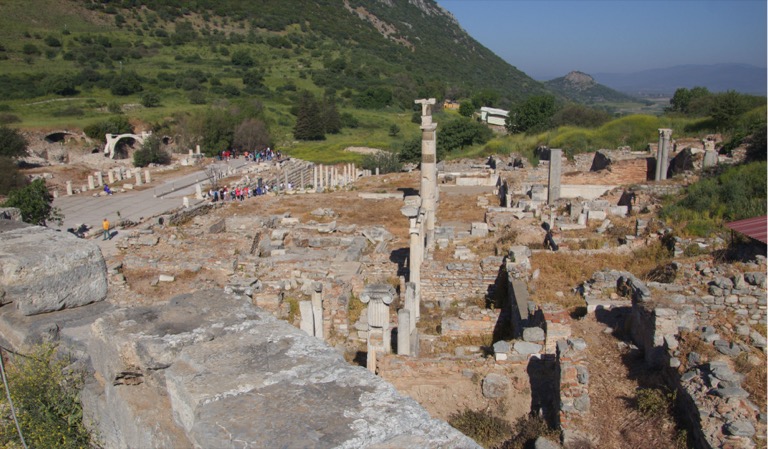
Continuing towards the harbor, next you come to the remains of Domitian’s temple.
The central section of the street was paved with marble.
Hadrian’s temple has also been reassembled.
Along that street there was a stoa with a mosaic on the floor. There would have been shops on the left.
Next up is an optional part of the Ephesus site, you need to pay extra to visit the Terrace Houses. This is where the rich could live. There are six units ranging from 1000 to 6000 square feet. They had hot and cold running water, private bathrooms (no need to go to the public toilets). They also had in floor hot air heating and mosaics on the floor.
More mosaics.
There were some frescoes, but they are not in good condition, and are in awkward places to photograph.
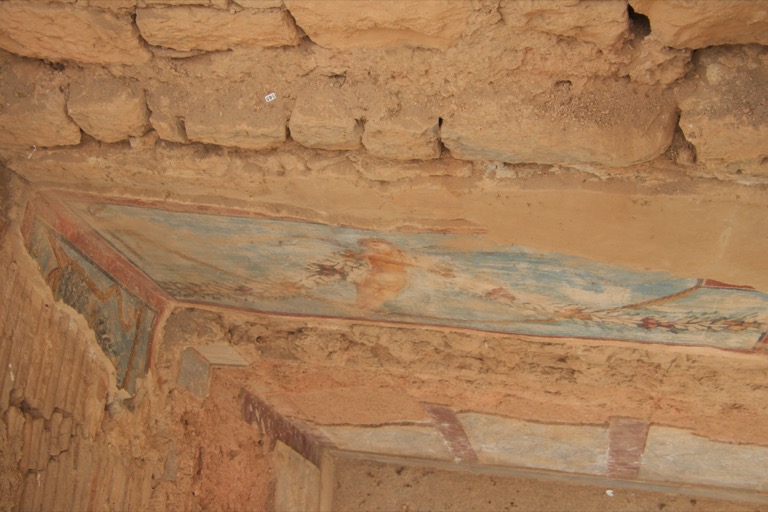
To get around a moratorium on graves in the city, Galius Julius Aquila built a library and buried his father, the governor of the province of Asia under it. It was the third-largest library in the ancient world behind Alexandria and Pergamon. The library facade was restored in the 1970s.
There is a very large theater with a capacity of 25,000.
Road to harbor.
For our last stop in Ephesus, we saw the church where the Council of Ephesus was held in 431 AD. Here is the alter area, again looking east.
This is the baptismal fount in the middle of the church.
This church also had a side baptistry for adult immersion baptism. Notice the felt and rock protecting the original flooring.
This Eurasian Jay was posing on one of the signs.
Then we went up into the surrounding mountains to Şirince Village for lunch. It is claimed that when Ephesus was abandoned, partially because it’s harbor had silted up, the inhabitants moved up into the surrounding mountains. The villagers who left in the 1920s population exchange with Greece may be descendants of the Ephesians.
They make a variety of fruit wines and jams. We tried the mulberry wine at lunch and enjoyed it.
A nice sunset over the water from dinner.
